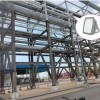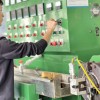A coil ( or coiled) cord or cable is a cable that can be extended and will return to original contracted form while minimizing the stress on the wire. A coil cord consists of two tangents and retracted length. The tangents are the straight uncoiled part of the cable located at each end. Understanding what the dimensions need to be in use, extended and retracted, are key in the design of the coil cord
Coil cord or cable is also commonly referred to as a coiled cord, a curly cord, a retractile cord or retractable cable.
What our factory can supply ?
QIJUN electric specializes in manufacturing various types of coil cord or cable, particularly for the telecommunications industry. An example of a common use is the modern telephone: coiled cord is what attach handsets to telephones. QIJUN can also recommend and assist in the design of the correct coil cord or cable for specific applications.
Coil Cord Applications
There are many and varied applications for coil cord and cables. These include, but are not limited to:
● Music
● Marine
● Military
● Medical
● Food and Beverage
● Electronic
● Test Equipment
● Communications
● Audio and Video
● Industrial
● Energy
● Robotics
How to manufacture coil cord or cable ?
STEP ONE: Jacket material selection: For telephone coil cord, PVC material is used. This is a low cost with high quality. For special requirements, PUR material is used, which is a thermoplastic elastomer.
STEP TWO Wind the PVC cable onto a rod. During this process the coiled cord starts to look like the final product. The PVC cable is wrapped around a rod that can be a small as 1/4 of an inch to a large as 3 or 4 inches in diameter. The size of the rod creates the inside diameter (ID) of the coiled cable. A small ID creates a coiled cord with more spring action and a larger ID creates less spring action. If the ID of the coil is too small the cord will have difficulty retaining the shape. The length of the coiled rod is controlled not the number of coils.
STEP THREE Heat treating. The outer jacket materials can be softened with heat, however too much heat will melt the material and too little won’t change anything. The goal is to heat the material JUST hot enough and for JUST the right amount of time to get it to stay in the coiled shape. This requires experience and know how because if it isn’t done right then the coiled cord won’t perform correctly.
STEP FOUR Reverse winding. During heat treating the material on the outside of the coil cord is lengthened and the material on the inside is shortened. When the coil cord is reverse wound, or turned inside out, the force pulls the coils together giving the coil cord the spring action.
STEP FIVE Molding of plug and connector. The cable can be built with the appropriate plug for the final destination country.
The other keywords
There are various terms used in the wire and cable industry related to this type of cable. They include:
● Coil Cord
● Coiled Cord
● Custom Coil Cord
● Curly Cord
● Spiral cable
● Telephone Cord
● Tangent
● Mandrel
● Retractile Cords
Do you require a coil cord or other types of specially designed cables ? Then please do not hesitate to contact us- we realize your wishes even in small quantities.





